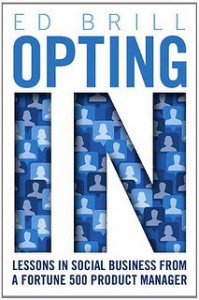I haven’t yet tried Ello, the newest social network to aspire to the role of “Facebook killer” (though my request for access is pending), but I know already that it is doomed to fail in that role. I’ve seen this scenario play out again and again, and result is a foregone conclusion.
Ello has attracted attention because of its pugnacious attitude expressed in a “manifesto” that begins, “Your social network is owned by advertisers” and ends “You are not a product.”
 Some people are rooting for Ello to unseat Facebook by tapping into user rage over the giant social network’s controversial approach to using member information to sell advertising. They will be disappointed. Ello has no better chance of challenging Facebook than MySpace or Friendster. The social network wars are over, Facebook won and it’s time to move on.
Some people are rooting for Ello to unseat Facebook by tapping into user rage over the giant social network’s controversial approach to using member information to sell advertising. They will be disappointed. Ello has no better chance of challenging Facebook than MySpace or Friendster. The social network wars are over, Facebook won and it’s time to move on.
My opinion is rooted in more than 30 years of watching battles play out over new platforms. Invariably the script is the same. To understand why Facebook has already won you have to understand the nature of technology platforms.
Platform Markets are Different
Platforms are technologies that serve as a foundation for development. Windows is a platform. So is the X86 chip architecture. Oracle is a platform and so are iOS and Google Maps. The winners in platform markets typically get 80% share, and everybody else fights over the scraps. This is because developers and customers want safe choices. They’re willing to pay more and accept less in exchange for knowing that a platform is going to be around for a while.
Platform winners are never supplanted by direct competitors. They fail for two main reasons: Customer preferences change or a new platform comes along that delivers a new kind of value.
An example of the first phenomenon is spreadsheets. In the late 1980s Lotus was larger than Microsoft and had a stranglehold on the highly profitable spreadsheet market with 1-2-3. Dozens of competitors took on Lotus with cheaper alternatives or modestly differentiated products. None gained more than a few percentage points of market share. What killed 1-2-3 was a change in preferences.Users preferred an integrated office suite based on a GUI metaphor. Microsoft had that and Lotus was slow to respond. (What’s sometimes forgotten is the Microsoft also discounted Office heavily in the early days, a strategy that helped tip the balance.)
An example of the second phenomenon is network operating systems. Novell’s NetWare reigned as the market leader until a good enough alternative came along in IP. IP wasn’t as elegant as NetWare, but it was free and accessible to all. Once it achieved critical mass, it became a safe choice and NetWare’s fate was sealed. Linux did the same thing to proprietary competitors on the server. Platform vendors are terrified by competitors that build critical mass.
Free doesn’t always supplant expensive. Linux on the desktop has never challenged Windows, but I think that’s due more to usability issues than price. On servers, Linux has done extremely well. It has critical mass.
Once platform companies become embedded they protect their franchise through a surround strategy. Some, like Microsoft and Intel, build formidable distribution networks and use volume discounts to block competition. Others, like Oracle and EMC, build software layers around their platforms that effectively embed them into customers’ organizations. Basically, it becomes more expensive for customers to switch than to stick with the incumbent.
What’s Really Different about Ello?
How does this relate to Ello? From what I’ve read, Ello uses the same basic social networking metaphors as Facebook and every other social network. Functionally, it’s a wash. Ello’s only major distinction is in the way it handles personal data.
The problem with that strategy is a few people really care. Privacy is important to a vocal minority, but in my view the vast majority of Facebook users couldn’t care less. As long as they can post photos of their kids and trash talk with their friends at no charge they’re happy. The recent disclosure that Facebook secretly manipulated the emotions of nearly 700,000 users has gotten plenty of media attention, but I don’t see anyone occupying Central Park over this issue. Facebook knows better than anyone that there are lines it shouldn’t cross.
What will ultimately unseat Facebook – or at least halt its growth – will be something that looks nothing like a social network. It may be based on sensors or artificial intelligence or free beer. No one knows. That’s one of the beauties of technology disruption. It comes from the craziest places. One thing is clear to me, however. It won’t come from Ello.



